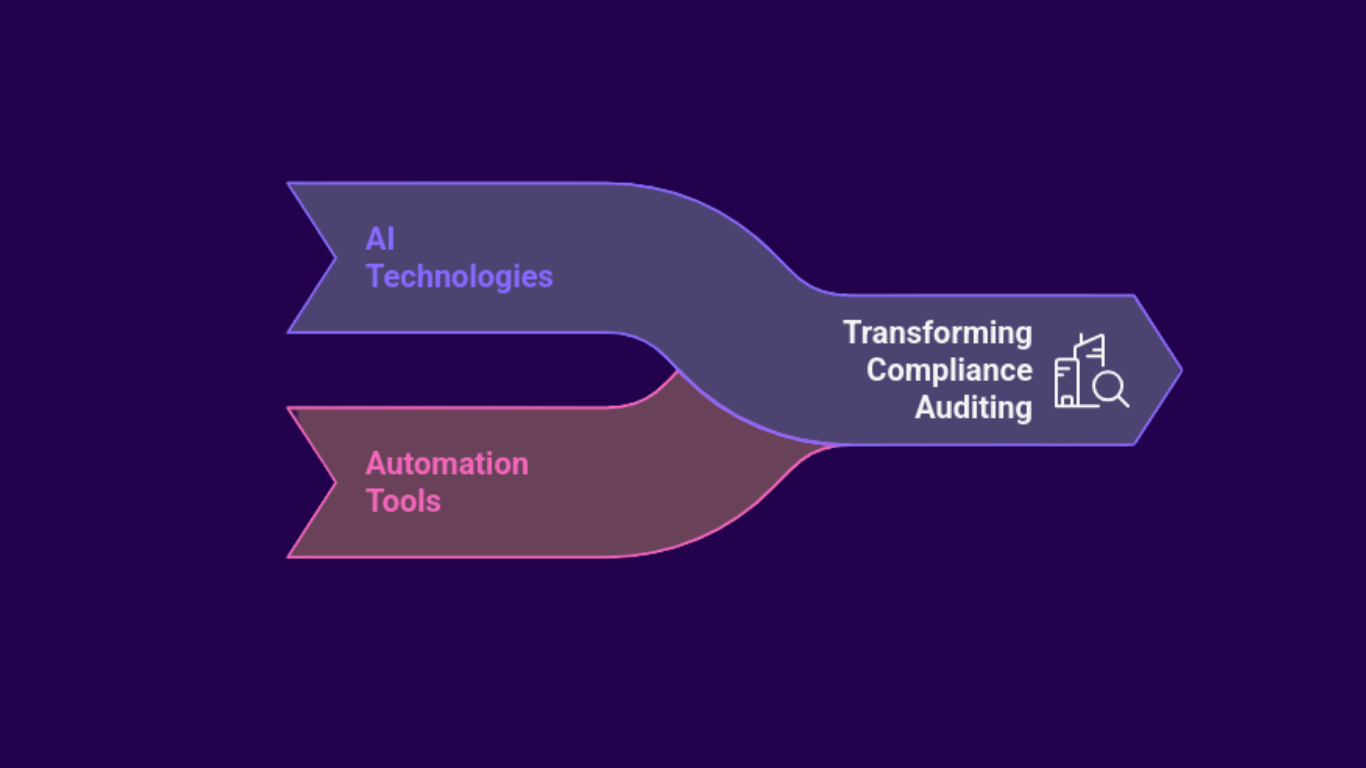The world of compliance auditing is undergoing a massive transformation. With regulations becoming more complex and businesses expanding across multiple jurisdictions, the need for audit efficiency and accuracy has never been greater. Traditionally, audits have relied on manual processes, where teams of professionals sift through financial records and compliance reports to identify potential risks. However, with the rise of AI compliance automation, organizations are rethinking their approach.
Manual Auditing: Strengths and Limitations
The human expertise in risk assessment tools and investigative skills makes manual audits highly reliable. Auditors bring a deep understanding of context, nuances, and industry specific regulations that AI cannot yet fully replicate.
However, manual auditing comes with inherent drawbacks:
- Time Consuming: Reviewing financial statements, policies, and compliance records manually takes significant time and effort.
- Error Prone: Even the most skilled auditors can make mistakes due to fatigue or oversight.
- Reactive, Not Proactive: Manual audits typically detect issues after they occur rather than predicting potential risks.
- Limited Scalability: As businesses grow, manual processes struggle to keep up with increasing compliance requirements.
- Inconsistencies in Human Judgment: Unlike AI, manual audits rely on subjective human analysis, which can lead to inconsistencies in results.
AI Compliance Automation: A Game Changer
AI-powered auditing introduces a proactive, data driven approach to compliance. With machine learning (ML) and automation, organizations can streamline audits, identify risks faster, and ensure real time regulatory compliance. AI compliance automation is revolutionizing the field by offering:
1. Real Time Monitoring and Risk Detection
Unlike traditional audits, AI continuously scans financial data, transactions, and policies for anomalies. By leveraging risk assessment tools, AI identifies real time compliance breaches, reducing regulatory risks before they escalate. AI-powered regulatory tracking systems can automatically update policies based on real time regulatory changes, ensuring businesses comply with evolving laws.
2. Enhanced Accuracy and Reduced Errors
AI algorithms analyze vast datasets with precision, minimizing human errors. Machine learning models can detect inconsistencies and fraud patterns more effectively than manual audits. Predictive compliance analytics enable businesses to anticipate compliance risks before they occur by analyzing past audit results and transaction patterns.
3. Predictive Compliance Analytics
Through historical data analysis, AI can predict potential compliance violations, allowing organizations to take preventive actions. AI-driven audits provide insight into past violations and offer forecasts based on emerging compliance risks, helping organizations avoid regulatory fines and reputational damage.
4. Scalability and Efficiency
With AI, organizations can conduct audits across multiple departments, subsidiaries, and regulatory frameworks simultaneously. Audit efficiency improves significantly, as AI systems can process large datasets within minutes compared to weeks of manual audits.
Balancing AI and Human Oversight
While AI offers numerous advantages, it does not entirely replace human auditors. Instead, the future of compliance lies in a hybrid approach leveraging AI for automation while retaining human expertise for judgment-based decision making.
AI Role in Compliance Auditing
- Automates data collection, risk detection, and report generation.
- Natural language processing (NLP) is used to analyze regulatory updates and ensure compliance.
- It provides auditors with AI-generated insights to help them make more informed compliance decisions.
- Identifies fraudulent transactions and financial anomalies in real time, reducing reliance on traditional sample based auditing.
Human Auditors’ Role in Compliance Auditing
- Interpret AI findings and contextualize anomalies.
- Conduct ethical reviews to ensure AI-driven decisions align with compliance standards.
- Handle complex, industry specific regulations that require judgment and experience.
- Assess AI-generated compliance recommendations to ensure they align with company policies and broader regulatory frameworks.
Challenges of AI in Auditing
Despite its potential, AI compliance automation faces challenges that must be addressed:
- Data Privacy Concerns: AI systems require vast data, raising questions about data security and regulatory compliance.
- Bias in AI Models: AI can inherit biases from training data, leading to inaccurate risk assessments.
- Regulatory Uncertainty: Many legal frameworks are evolving to address AI-driven auditing, making compliance unpredictable.
- Lack of Human Oversight Risks: Organizations risk misinterpreting compliance guidelines if AI recommendations are implemented without sufficient human review.
The Future of Compliance: A Technology Driven Landscape
Compliance audits will become more predictive, automated, and scalable as AI advances.
Businesses looking to stay ahead must adopt AI-driven risk assessment tools while maintaining robust manual auditing processes where necessary. AI-powered automated compliance solutions will become standard in risk assessment, yet manual auditing will still be required for final verification and deeper analysis. The future of compliance isn’t about choosing between AI vs. manual audits; it is about leveraging both to create a seamless, effective, and future proof auditing system.
Conclusion
AI is not poised to replace auditors but rather to augment the efficacy of compliance processes. Sahl embodies this future, integrating AI to streamline routine compliance tasks while reserving human expertise for critical oversight and ethical judgments. This dual approach not only enhances accuracy and efficiency but also aligns with the evolving needs of businesses facing complex regulatory environments. By embracing AI-powered tools, Sahl provides organizations a robust solution for maintaining rigorous compliance standards effortlessly, ensuring that they stay ahead in a technology-driven landscape.



